What Is Bracing | Types of Bracing | What Does Brace Mean | Advantages & Disadvantages of Bracing Systems
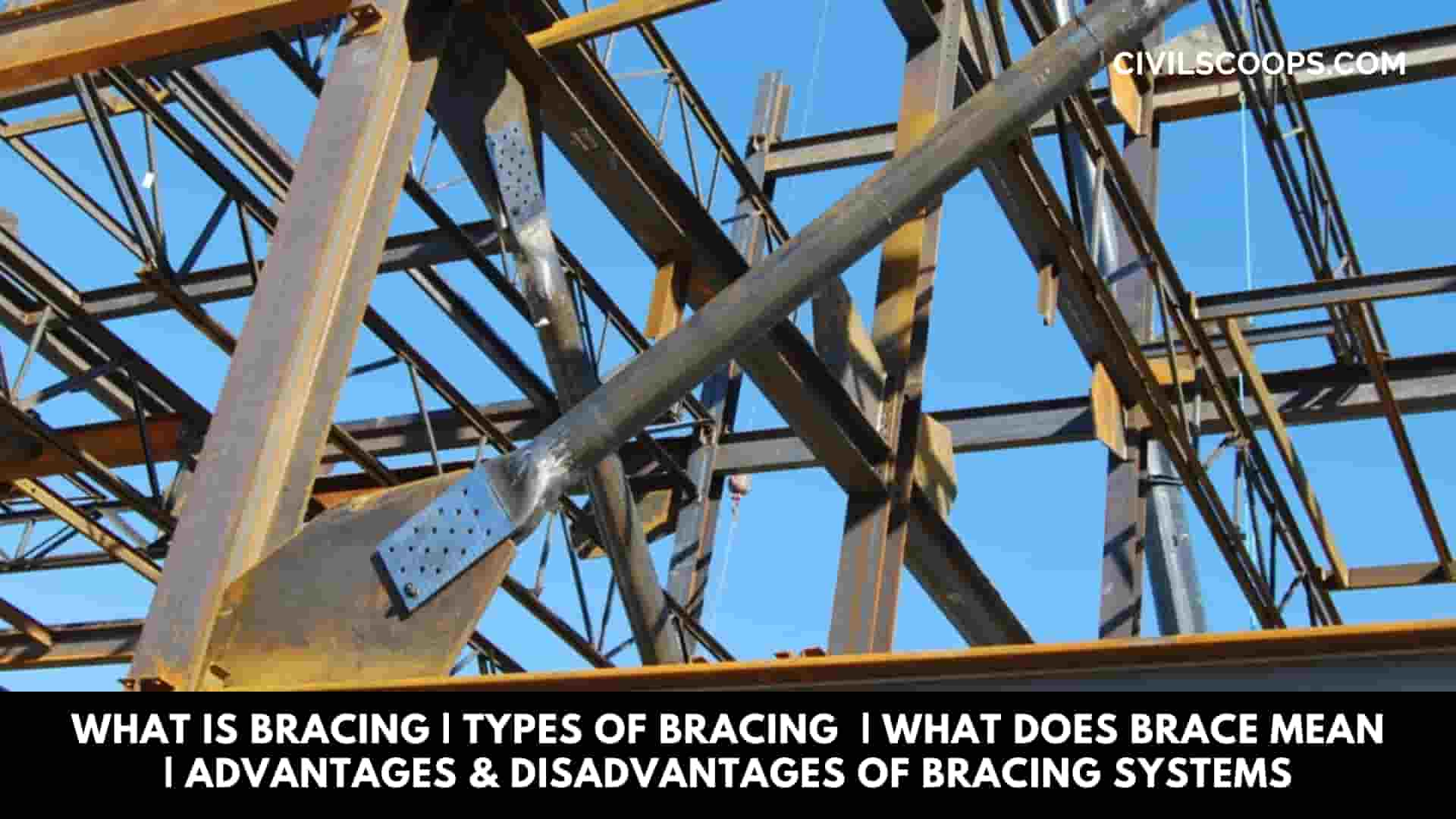
Selection of the right lateral force resisting system has a significant effect on the performance of the structure in steel structures. In this article, you will get to learn about the bracing systems and types of bracing systems used in steel structures.
Table of Contents
What Is Bracing?
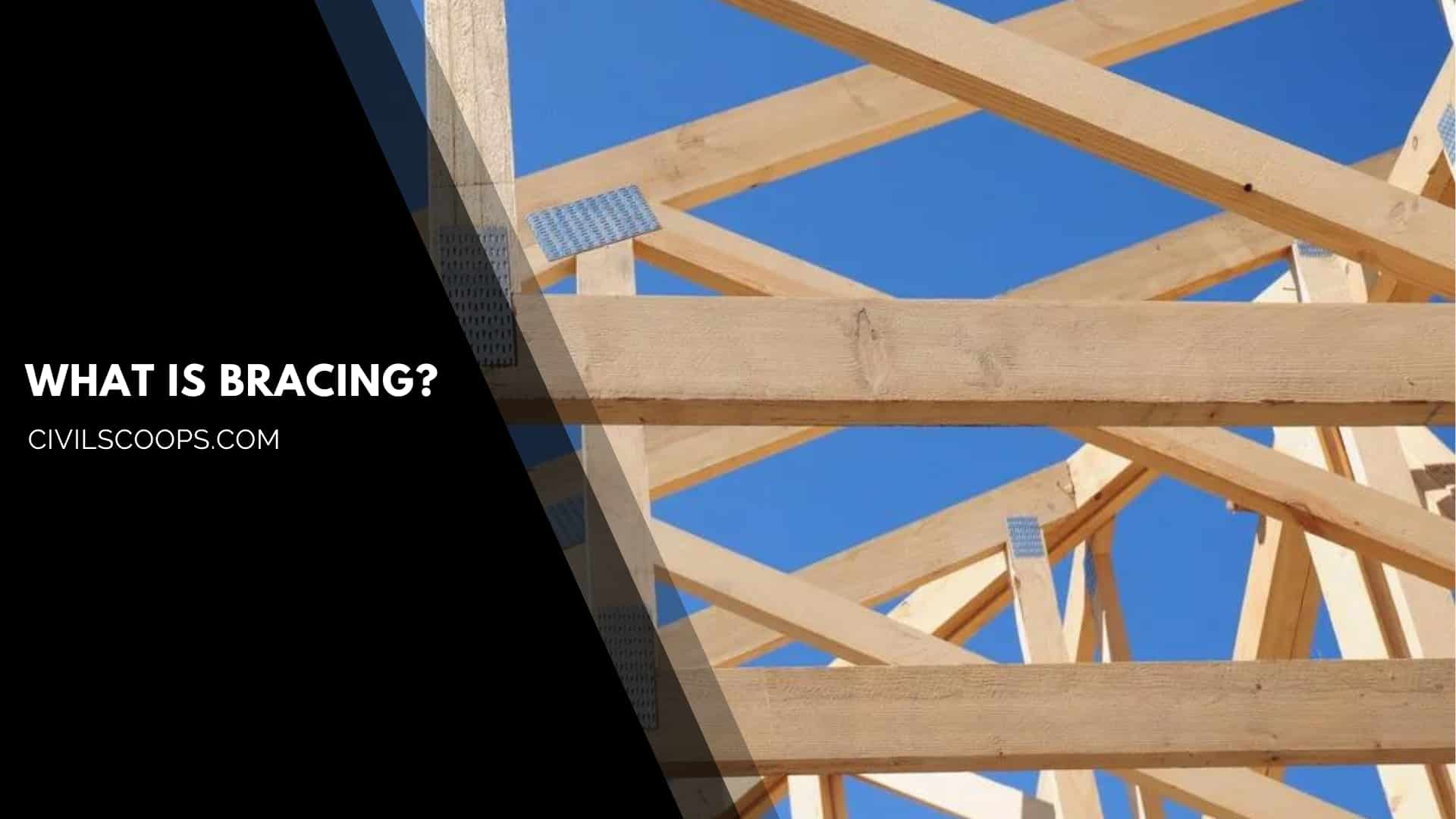
The bracing systems are an essential element for the which are generally subjected to the lateral loads mainly due to the earthquake or wind.
As you know, the beams and columns are subjected to carry the vertical loads acting on the structures, whereas the bracings are used to maintain the lateral loads acting on the structures.
The Bracings will help to reduce the lateral deflection on the structures. The most common reason for providing bracing is to control the buckling of the main beams. The small tonnage of the steel bracings increases a huge resistance against the bending of the beam.
What Does Brace Mean?

Bracing is one of the most essential and crucial parts of the structures that helps to improve the stability of the building and resist the buildings from earthquakes.
The Braced frame is basically a structured system designed to withstand the High wind and the forces of the earthquakes. The members in the braced frame are not allowed to sway laterally.
The purpose of providing bracings is to ensure additional safety against external loads. The Braced buildings are reinforced by the steel members and increase the tensile and compressive strength of the building.
The Bracings are primarily used in the steel structures to resist the lateral force acting on the steel structures due to wind, earthquake, etc.
Types of Bracing

There are mainly two main types of bracing systems that are used in the construction of buildings that are as follows.
- Horizontal Bracings
- Vertical Bracings
1. Horizontal Bracing System
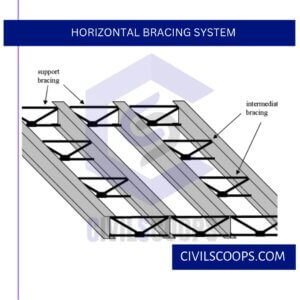
The Horizontal bracing system consists of the bracings which are provided at each floor in the horizontal planes and provides the load paths so that the horizontal forces can be easily transferred to the planes of the vertical bracings.
Horizontal bracing systems are designed to transfer horizontal loads from columns at the perimeter of the structure to the planes of vertical bracing.
The horizontal forces on perimeter columns are developed due to the wind force pressure on the structure. There are two major types of horizontal bracing systems that are generally used in the multistory braced steel structure, which are diaphragms, and discrete triangulated bracing.
In diaphragms, there are different types of floor systems that provide a perfect horizontal diaphragm, such as composite floors, whereas others, such as precast concrete slabs, need specific measures to be satisfactory to serve their purpose.
For example, steelwork and the precast concrete slab should be joined together properly to avoid relative movements.
Also Read: 10 Different Types of Loads on Structures | What Are Structural Loads
2. Vertical Bracings System
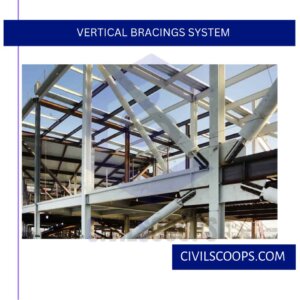
In the vertical planes, the bracings lie between the column lines, which provides the load paths that are used to transfer the horizontal forces to the ground level, and this system will transfer the horizontal loads to the foundations and withstand the overall sway of the building.
These are the types of bracings that are placed between the two lines of the columns. There are also two subtypes of vertical bracings that are as follows.
2.1. Cross Bracings
- The cross bracings are slenderly withstanding tension forces only, and they are not the compression forces which provides the necessary lateral stability mainly depends upon the direction of the loading.
2.2. Single Diagonal Bracings
- Whereas the single diagonal bracings are designed to resist both tension forces as well as compression forces. In this, there is s diagonal member that is inserted into the rectangular areas of the structural frame that is good for the stabilization of the frame.
- The bracing systems are placed at a near 45 degrees for an efficient system, and this arrangement is strong and compact.
- The vertical bracings are mainly designed to resists the high wind loads and the horizontal forces acting.
- A minimum of two vertical planes in each of the orthogonal directions are provided to prevents the disproportionate collapse. The more number of the vertical planes of the bracings that are installed helps to improve the structural stability.
Advantages of Bracing Systems
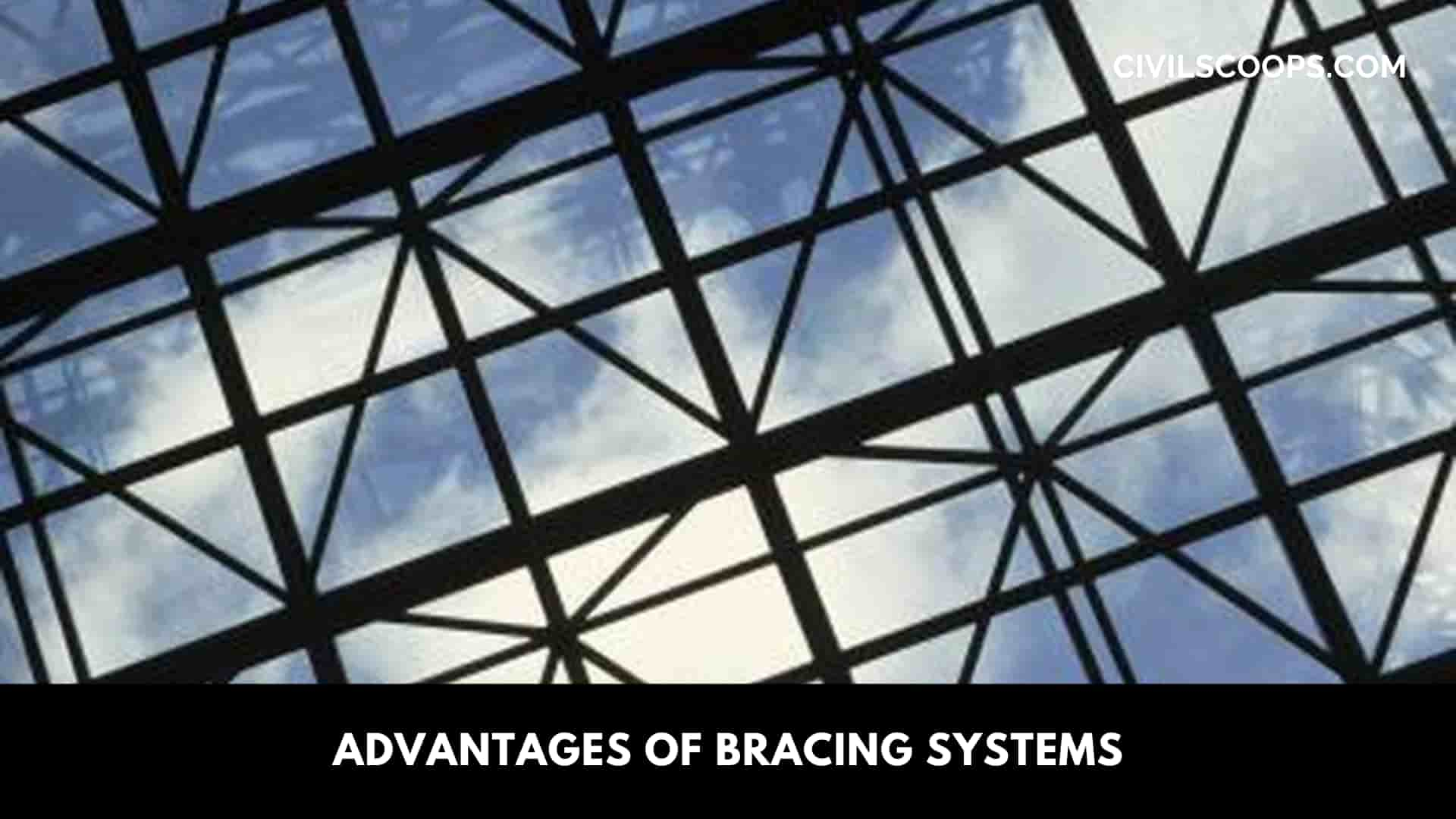
There are various benefits for which bracing systems are used in the structures that are as follows.
- The Bracing systems are used to resists the buckling of the main beam in the structure.
- It also helps to equally distribute the lateral loads as well as vertical loads between the main beams.
- It is cost-effective and very easy, and flexible to design and get the required strength and stiffness.
The Braced frames have good resistance to high-speed winds and seismic forces as compared to the non-braced buildings.
Reduction in lateral displacement is one of the major advantages of using bracing system.
Disadvantages of Bracing Systems
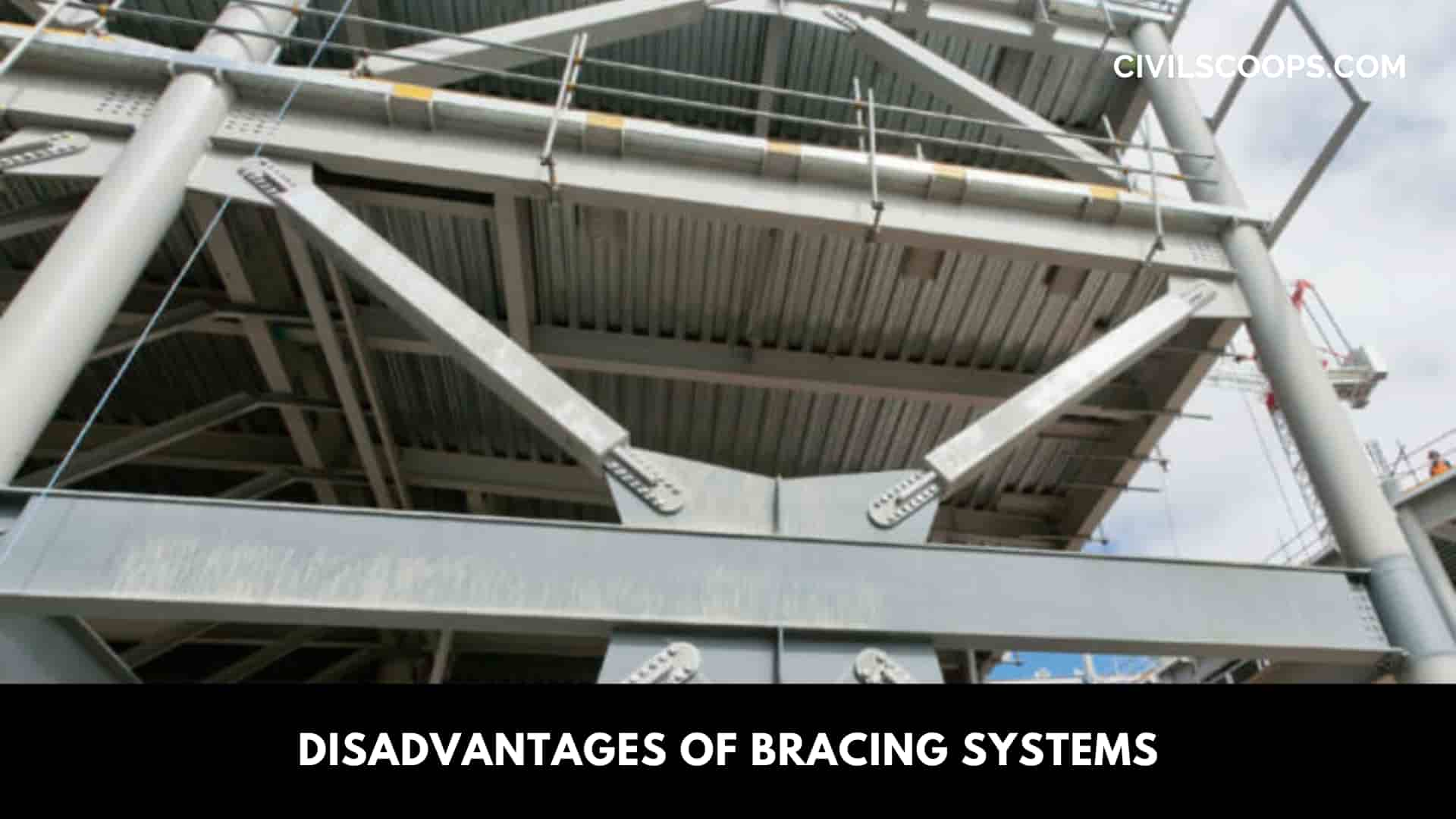
There are also some disadvantages of bracing systems that are as follows.
- The length of the span of the structures is restricted up to 40 feet when reinforced.
- The construction of the bracing systems required skilled workmanship.
Bracings in Truss
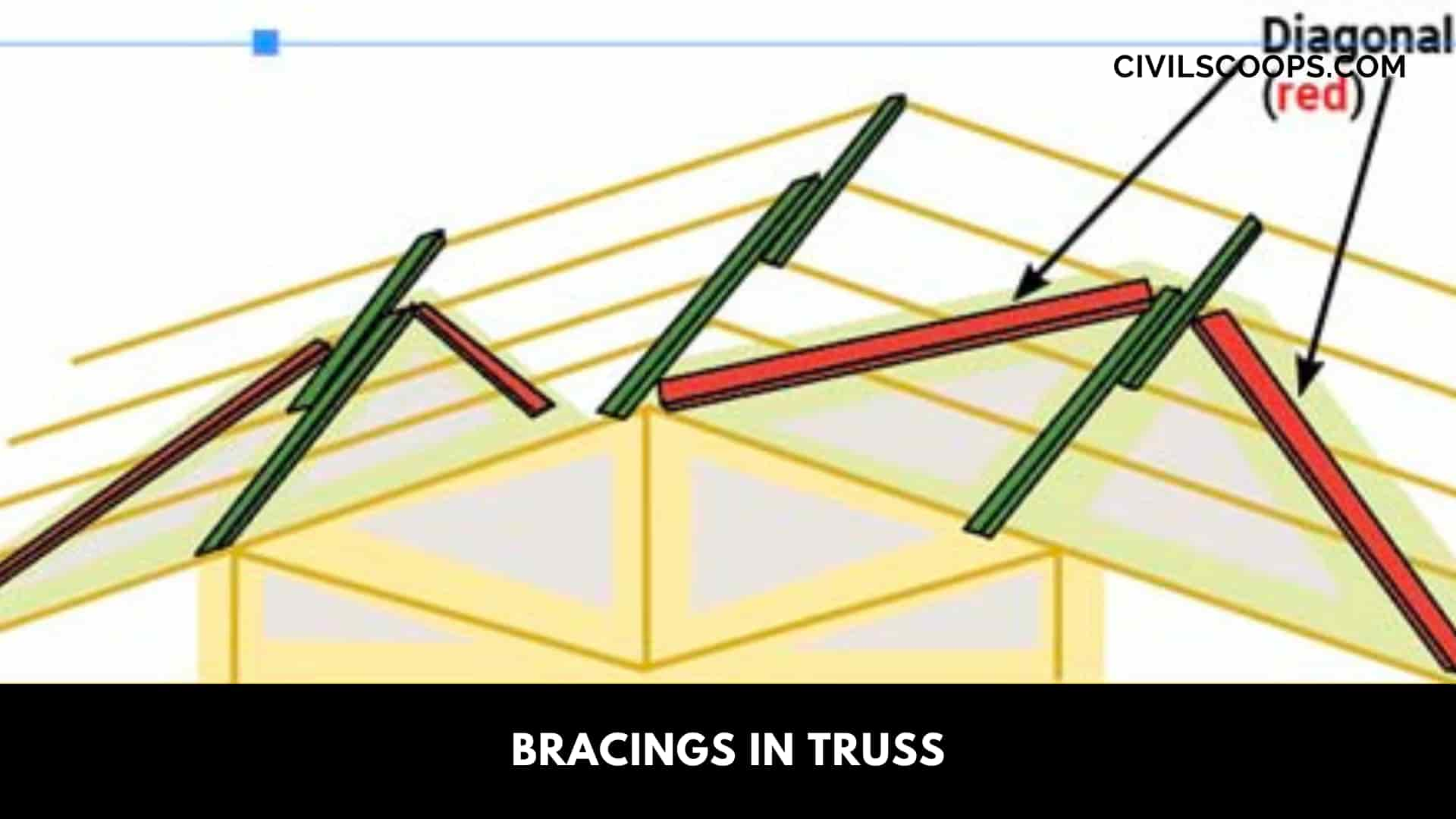
Bracings are reinstalled to hold the trusses in a stable position to prevent the structure from buckling under the pressure of high winds and heavy rainfall.
The structures less than 12 feet in width do not required truss bracings. The truss braces should be installed inside the truss sections.
[su_box title=”FAQ” style=”default” box_color=”#333333″ title_color=”#FFFFFF” radius=”3″ class=”” id=””]
What Is Bracing in Truss?
Bracing can be used temporarily for safety whilst erecting the trusses, for stability on a permanent basis (to keep the trusses in place) or to combat wind where bracing can transmit wind forces to suitable load bearing walls.
What Is Bracing in Construction?
A bracing system is a secondary but essential part of a bridge structure. A bracing system serves to stabilize the main girders during construction, to contribute to the distribution of load effects and to provide restraint to compression flanges or chords where they would otherwise be free to buckle laterally.
Do Floor Joists Need Cross Bracing?
If your floor seems bouncy or saggy, you may need to consider cross bracing your floor joists. Floor joist bracing is often necessary in older homes where the existing joists may have worn out over time.
Horizontal Bracing in Steel Structure
Horizontal bracing is employed to resist horizontal / lateral loads on the structure and distribute them to the outer columns and thereby into the vertical stabilizing system. Horizontal bracing will also maintain the planar integrity of the structure and prevent it from deforming out of shape.
Vertical Bracing in Steel Structure
Vertical bracing. Bracing in vertical planes (between lines of columns) provides load paths to transfer horizontal forces to ground level and provide lateral stability.
What Are the Different Types of Bracing?
- Plan bracing.
- Torsional bracing.
- U-frame bracing.
Do Trusses Need Cross Bracing?
To strengthen the roof system truss clustering (cross bracing and wind bracing) is recommended at both end of the buildings and every 20 ‘ for longer span buildings.
Truss Bracing Requirements
Trusses above 60′ in length should be lifted with a strongback 2/3 to 3/4 the length of the truss. The truss should be securely tied to it at intervals of 10′ or less. For flat trusses, the strongback should be tied to the top chord.
[/su_box]
[su_note note_color=”#F2F2F2 ” text_color=”#333333″ radius=”3″ class=”” id=””]
Like this post? Share it with your friends!
Suggested Read –
- What Is Plaster | Methods of Plastering
- All About Grillage Foundation | Types of Grillage Foundation | Features of Grillage Foundation
- What Is Pier Foundation | Types of Drilled Piers | Advantages and Disadvantages of Drilled Pier Foundations
- All About Asphalt Flooring | What is Asphalt Flooring | Asphalt Flooring Used | Asphalt Flooring Advantages and Disadvantages
- What Is Caisson Foundation | Types of Caisson Foundation | Advantage, Disadvantage, Application, & Construction of Caisson
[/su_note]
Originally posted 2023-04-05 10:40:22.
